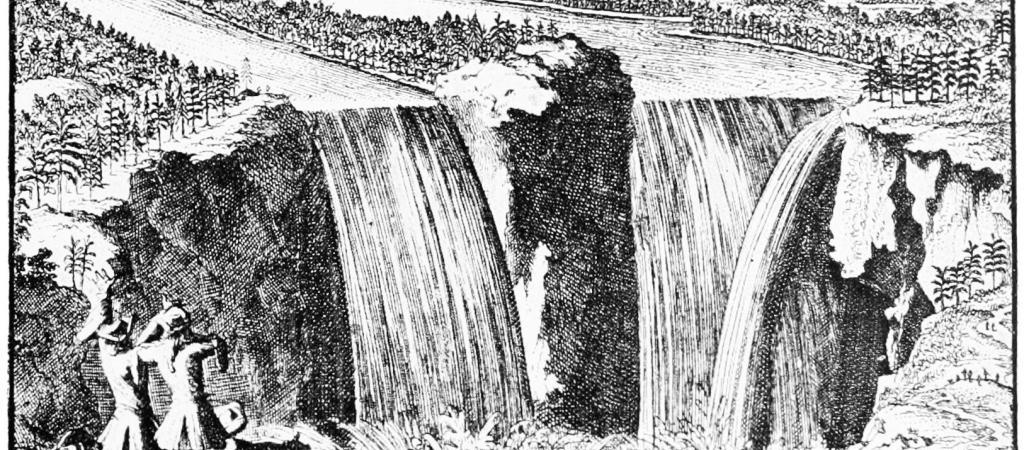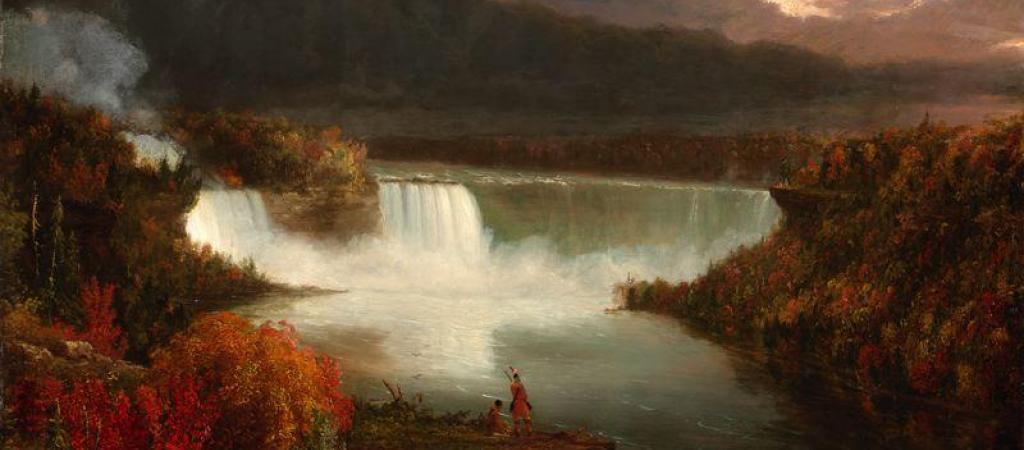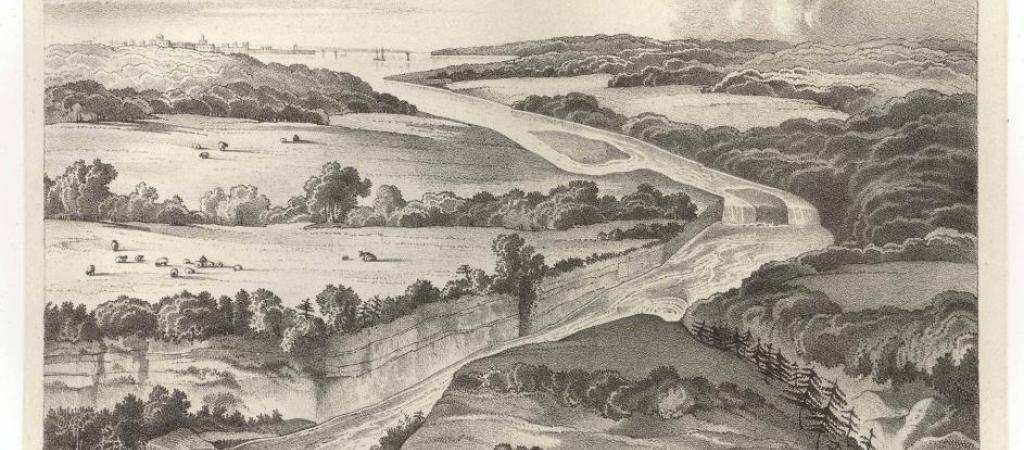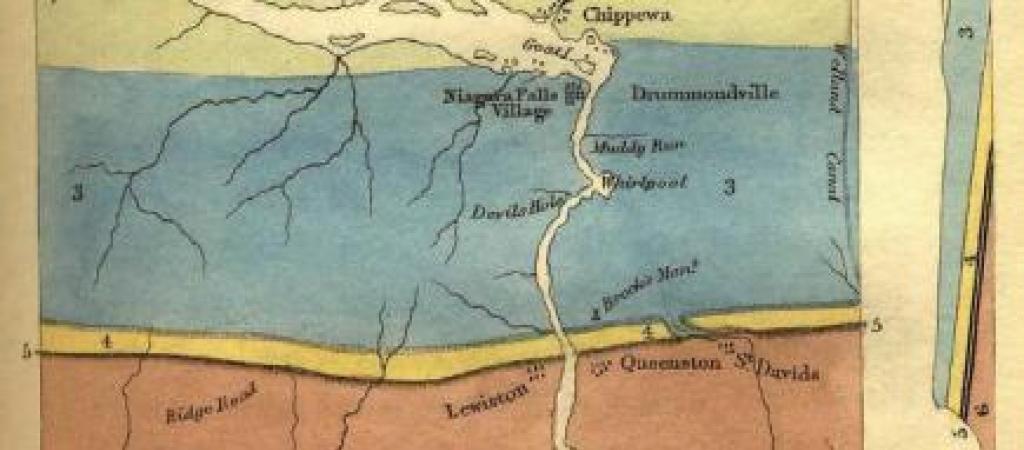Niagara Falls is one of most popular attractions in New York and around the world. The majestic power of immense volumes of water spilling over the falls and plunging to the rocks and river below is an awesome physical and visual experience, which is rarely matched elsewhere.
Niagara is far from the highest waterfall in the world, or even in New York. However, the rush of over 6 million cubic feet of water per minute, approaching the cascade at about 25 miles per hour, and plunging 70 to 190 feet across a distance of about 3000 feet, make it one of the natural wonders of the world. The varied patterns of flow across the wall of the waters' descent easily capture your attention, and hold you almost hypnotized at times. Whether viewing from the side, the river below, or behind the falls, the experience of Niagara Falls is a powerful one, indeed.
The earliest report of Niagara Falls by Europeans (1604) comes from Samuel de Champlain on his first voyage to the New World in 1603. He traveled only as far as modern-day Montreal, but gathered information on features further upriver from Native Americans. On Niagara Falls he wrote "That there is a fall about a league wide, where a very large mass of water falls into said lake..." (translated from French; from Mason, 1921, Anthology and Bibliography of Niagara Falls).






